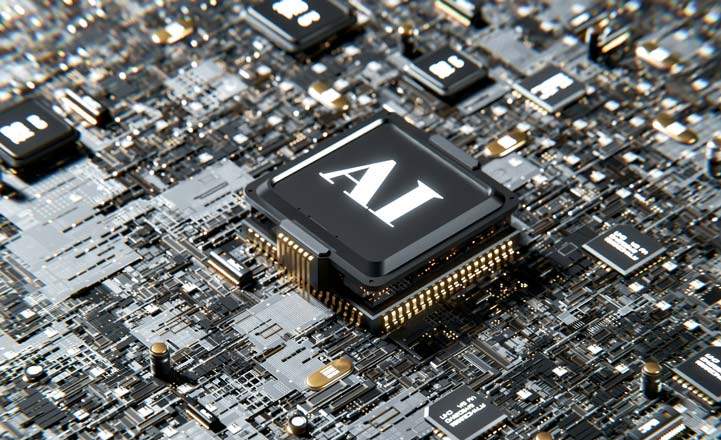The European AI market will reach €76.5bn this year, up by 25.9% compared to 2023, and then show an annual growth rate of 15.9% until 2030. The expanding footprint of AI applications is ushering in a paradigm shift within the realm of data centres.
Undoubtedly, the most popular talking point of 2023 was the disruptive revolution of artificial intelligence (AI). A theme which generated a flurry of headlines following the launch of ChatGPT at the end of 2022, ushering in what will be remembered as the breakout year of AI. In a matter of days following its release, ChatGPT took the internet by storm. OpenAI reported that the chatbot amassed a staggering 1 million users within five days. This widespread adoption offered the world a sneak peek into recent advancements in computer science. While it has come a long way, there is still a considerable distance before AI unveils its full potential and transformative possibilities.

From mythical beginnings to modern frontiers
The history of AI is a journey that spans millennia. While the concept of creating artificial beings with human-like capabilities has ancient roots in myths, formal AI emerged in the mid-20th century. Coined by John McCarthy in 1955, the term ’artificial intelligence’ gained prominence with the Dartmouth Conference in 1956, marking the sector’s birth. The ensuing decades saw periods of advancement and challenges, with the AI Winter in the 1970s and 1980s slowing progress. However, the development of expert systems in the 1980s and the rise of machine learning in the 1990s reignited interest. The 2010s brought about a transformative era marked by big data and deep learning.
In the past 12 months, the popularisation of AI and its progressive widespread application across industries propelled the sector into new frontiers. Yet, we are merely at the onset of the era of AI; ongoing research and development continue to shape the sector’s future, pushing boundaries in areas like robotics and autonomous systems, thanks to massive private investments. According to Crunchbase data, although venture investment continued to slow down in 2023, generative AI and AI-related startups raised nearly $50bn, up 9% from the $45.8bn invested in 2022. Statista projects that the size of the European AI market will reach €76.5bn this year, up by 25.9% compared to 2023, and then show an annual growth rate of 15.9% (CAGR 2024–2030).
AI’s meteorite impact on the data centre industry
While only at the threshold of a tremendous surge, the sudden AI adoption has already brought profound changes to the data centre industry, promising great opportunities but also ushering in significant challenges. The breadth of AI’s impact on data centres spans a broad spectrum, reshaping the demand for facilities, altering building infrastructure and design, refining operational and maintenance protocols, and optimising performances and resource utilisation.
Future demand set to explode, evolve and spread
AI is poised to significantly influence the demand for data centre facilities in various ways. Firstly, AI applications, particularly those utilising deep learning and complex algorithms, require substantial computational resources. Consequently, there is an increased demand for cutting-edge data centre facilities equipped with robust hardware to manage heightened workloads effectively. Furthermore, in response to the escalating need for extensive computational capabilities, data centres are projected to expand in scale to accommodate larger server farms and enhanced storage capacities. Moreover, to align with technological advancements, data centres will increasingly adopt specialised hardware like graphics processing units (GPUs) and tensor processing units (TPUs) to fulfil the demands of AI model training and inference.
This trajectory towards hyperscale and sophisticated facilities will also prompt advancements in cooling and power distribution systems to uphold optimal operational conditions, leading to a rise in power consumption within these facilities. Additionally, as many of these hyperscale AI data centres are location-agnostic, they are likely to be concentrated in regions with abundant energy resources, particularly green energy. Conversely, with the emergence of AI-driven services and applications requiring swift data processing, the significance of Edge data centres situated close to data generation points to minimise data latency will grow. Consequently, we anticipate an overall shift towards a more decentralised network of facilities to support AI workloads effectively.
Heavier building infrastructure requirements
Data centre buildings have multiple specific requirements to accommodate the unique demands of AI workload. As AI data centres generally house specialised hardware for which the weight can be substantial, the structural design of the building should account for the increased floor loading capacity. Whilst the industry standard floor loading capacity is generally 25kN per sqm, for AI-dedicated data centres, it is around 50kN per sqm and sometimes even higher, depending on the specific hardware and cooling solutions used.
AI optimises resource utilisation by dynamically allocating computing resources based on real-time demand, enhancing operational efficiency and cost-effectiveness.
Lydia Brissy, Director, European Research
Additionally, their floor height, traditionally above six metres slab to slab, can be much taller for AI-dedicated data centres (10–12m+), notably to accommodate specialised cooling systems. Furthermore, the building should support advanced cooling infrastructure, including precision cooling systems and potentially liquid cooling solutions, to manage the heat generated by high-performance computing hardware. Finally, AI workloads demand higher power densities. The building’s electrical infrastructure should be designed to support these increased power requirements, considering redundancy and scalability.
Enhanced management and cost efficiencies
AI optimises resource utilisation by dynamically allocating computing resources based on real-time demand, enhancing operational efficiency and cost-effectiveness. This ability allows data centres to scale resources up or down as needed. Additionally, AI is pivotal in predictive maintenance for data centre equipment. By analysing data from diverse sensors, AI algorithms can forecast potential failures and issues, enabling proactive maintenance and minimising downtime.
Furthermore, AI technologies significantly bolster data centre security. Machine learning algorithms can identify anomalous patterns in network traffic, detect potential security threats, and swiftly respond to mitigate risks, thus strengthening overall cybersecurity measures.
Moreover, AI plays a crucial role in improving the energy efficiency of data centres. Through intelligent management of cooling systems, lighting, and other power-consuming components, AI helps reduce the environmental footprint of data centres.
Read the articles within Spotlight: European Data Centres below.
.jpg)


.jpg)
.jpg)


